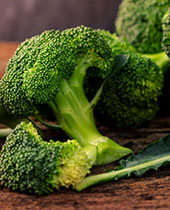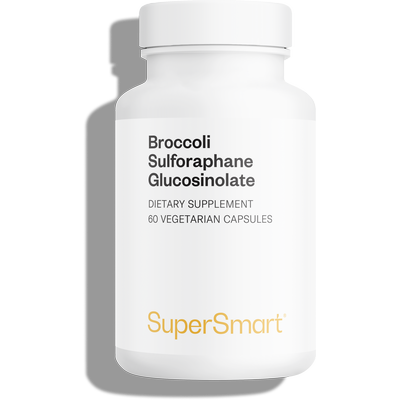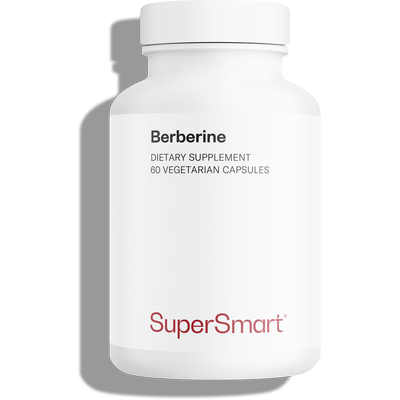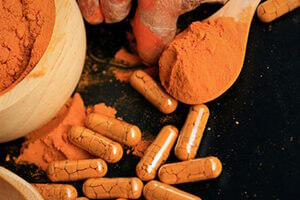09-10-2017
Type 2 diabetes: a new therapeutic approach
 Accounting for 90% of diabetes mellitus cases, type 2 diabetes has become a genuine public health issue1. A growing number of scientific studies are being conducted on the subject in the hope of finding new preventive and therapeutic solutions. Among the avenues being investigated are a number of natural molecules which have produced promising results. One such compound is berberine, a substance found in several Asian medicinal plants, the hypoglycaemic effects of which we explored in a previous article entitled ‘Berberine - an effective and powerful activator of AMPK’. More recently, scientists have uncovered therapeutic potential in a compound called sulforaphane found in broccoli. Read on to find out more about this discovery!
Accounting for 90% of diabetes mellitus cases, type 2 diabetes has become a genuine public health issue1. A growing number of scientific studies are being conducted on the subject in the hope of finding new preventive and therapeutic solutions. Among the avenues being investigated are a number of natural molecules which have produced promising results. One such compound is berberine, a substance found in several Asian medicinal plants, the hypoglycaemic effects of which we explored in a previous article entitled ‘Berberine - an effective and powerful activator of AMPK’. More recently, scientists have uncovered therapeutic potential in a compound called sulforaphane found in broccoli. Read on to find out more about this discovery!
Sulforaphane – a promising therapeutic approach for type 2 diabetes
In an effort to identify new candidate medications, a group of scientists recently pursued an innovative approach based on genetics. Published in the journal Science Translational Medicine2, their study centred on analysing models of gene expression and genetic signature with the aim of identifying connections between ‘disease signatures’ – in this case type 2 diabetes - and ‘drug signatures’. In other words, they were trying to predict the efficacy of a particular molecule for combatting type 2 diabetes. Their analysis identified a very promising candidate in the form of sulforaphane from broccoli (Brassica oleracea).
Therapeutic potential of broccoli sulforaphane
Identified as a molecule with significant therapeutic potential, sulforaphane is a natural compound long known for its medicinal virtues. Several studies had already confirmed its antioxidant potency against free radicals, its bactericidal action against infectious agents and its detoxifying effect in certain diseases. However, it was another mechanism of action which interested the scientists for its potential to fight type 2 diabetes. Their research suggested that sulforaphane has a hypoglycaemic effect, regulating glucose levels in the blood. Tests on liver cell cultures showed that sulforaphane may inhibit gluconeogenesis, a mechanism responsible for glucose production in the liver.
Encouraging results for the management of type 2 diabetes
First discovered in in vitro tests, sulforaphane’s hypoglycaemic effect was subsequently confirmed by a number of in vivo studies. The scientists observed a reduction in glucose production and an improvement in sugar tolerance in type 2 diabetic animals supplemented with sulforaphane. Similarly, improvements were seen in obese individuals with type 2 diabetes following sulforaphane supplementation, with decreases in fasting blood glucose and glycated haemoglobin.
While further studies are needed, these preliminary findings pave the way for promising new therapeutic approaches. With its hypoglycaemic effect, sulforaphane from broccoli may help prevent and manage type 2 diabetes, a benefit which may therefore join its already long list of protective effects. A compound with antioxidant, bactericidal and detoxifying properties, sulforaphane is available in nutritional supplement form from the SuperSmart catalogue as the product Broccoli Sulforaphane Glucosinolate 300 mg.
> Sources :
1. Organisation Mondiale de la Santé (OMS), Diabète, Aide-mémoire N°312, Juillet 2017 : www.who.int.
2. AS Axelsson et al., Sulforaphane reduces hepatic glucose production and improves glucose control in patients with type 2 diabetes, Science Translational Medicine, 14 Juin 2017, Volume 9, N°394.
Order the nutrients mentioned in this article

Broccoli Sulforaphane Glucosinolate is formulated from a standardised extract of broccoli (Brassica oleracea).
www.supersmart.com
Berberine HCL: natural extract of Berberis vulgaris for cardiovascular health
www.supersmart.comFurther reading
10-10-2016
In India, turmeric is used to treat a wide variety of ailments including gastrointestinal problems, inflammation, headaches, infections and colds. It is turmeric’s curcuminoid content,...
Read more06-07-2019
If you haven’t yet come across the medicinal plant gymnema (Gymnema sylvestris) , you may be surprised by just how many health benefits it offers....
Read more21-08-2019
The fight against ageing continues. Researchers working for a start-up biotech company have discovered the beneficial effects of urolithin A 1 , a substance produced...
Read more© 1997-2025 Fondation pour le Libre Choix
All rights reserved
All rights reserved
Free
Thank you for visiting our site. Before you go
REGISTER WITHClub SuperSmart
And take advantage
of exclusive benefits:
of exclusive benefits:
- Free: our weekly science-based newsletter "Nutranews"
- Special offers for club members only

















